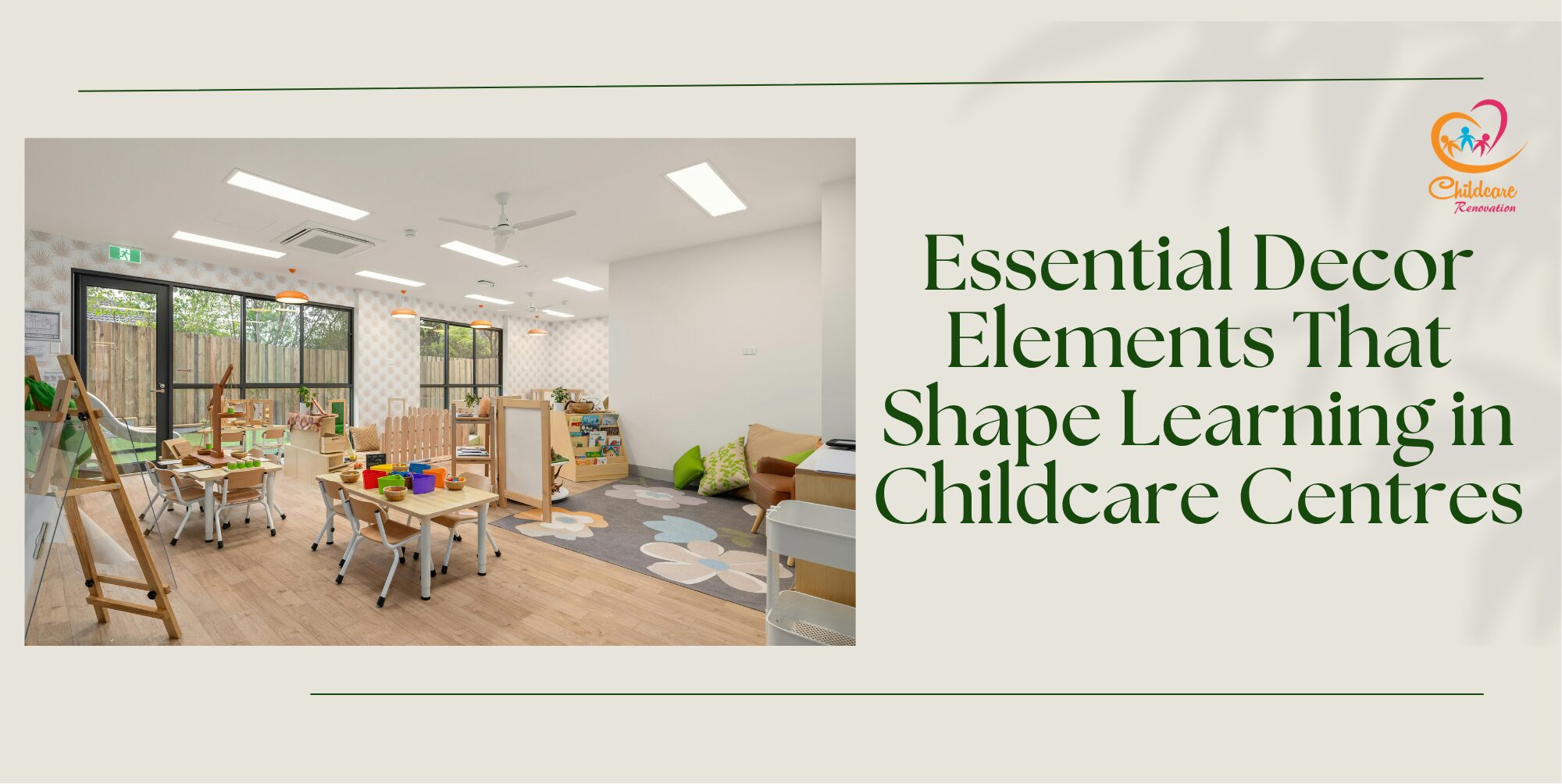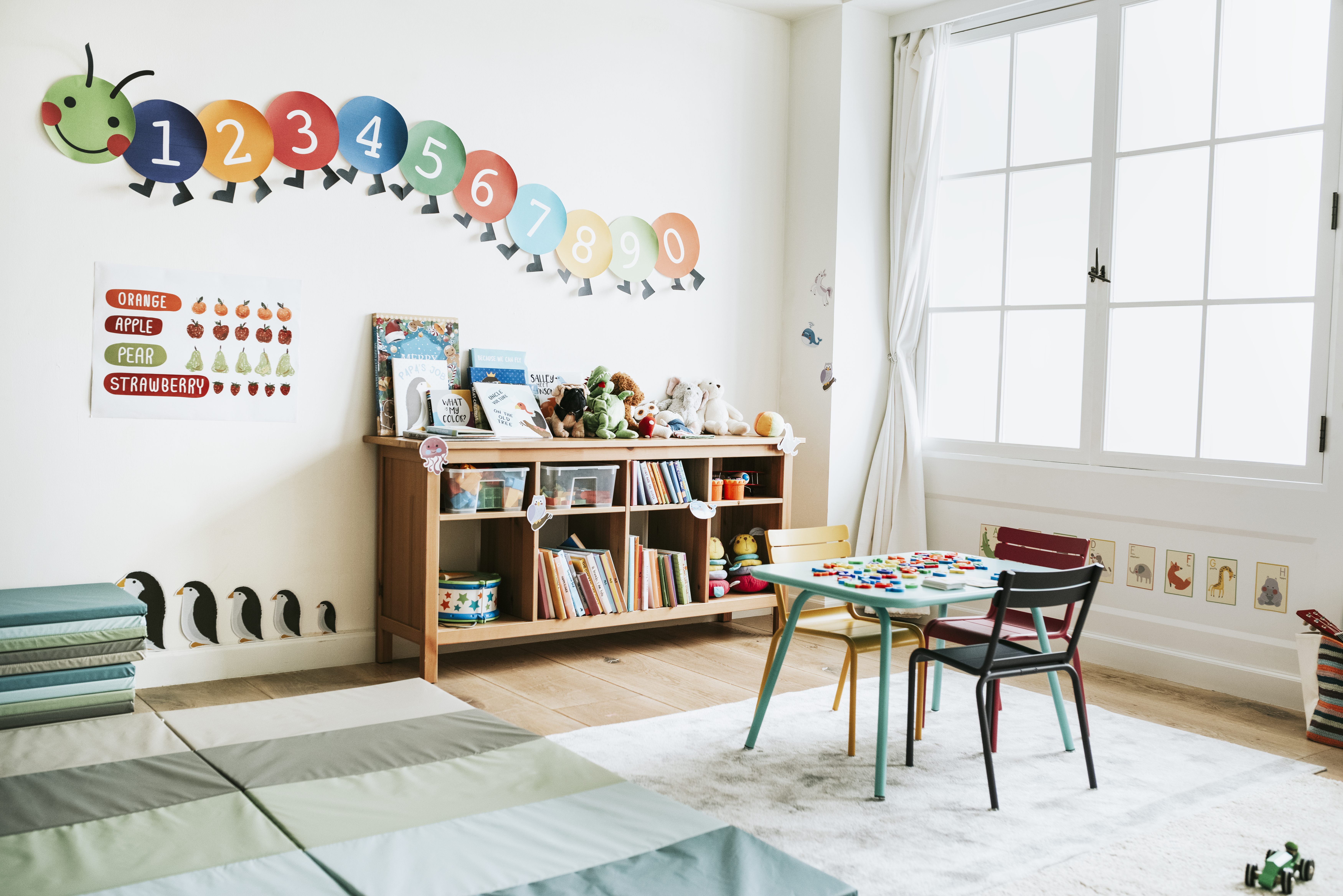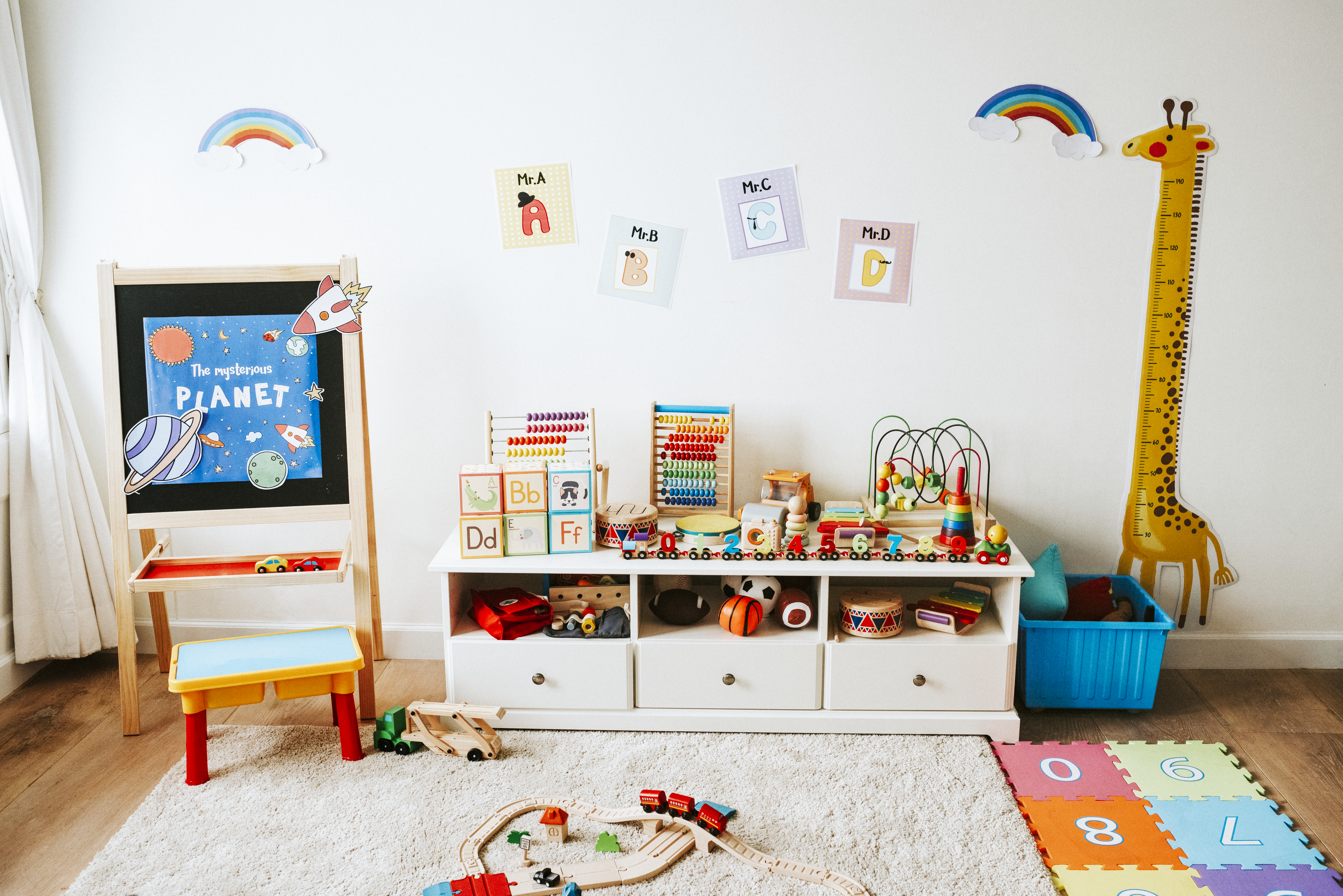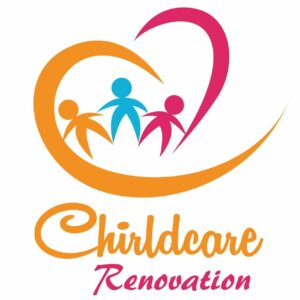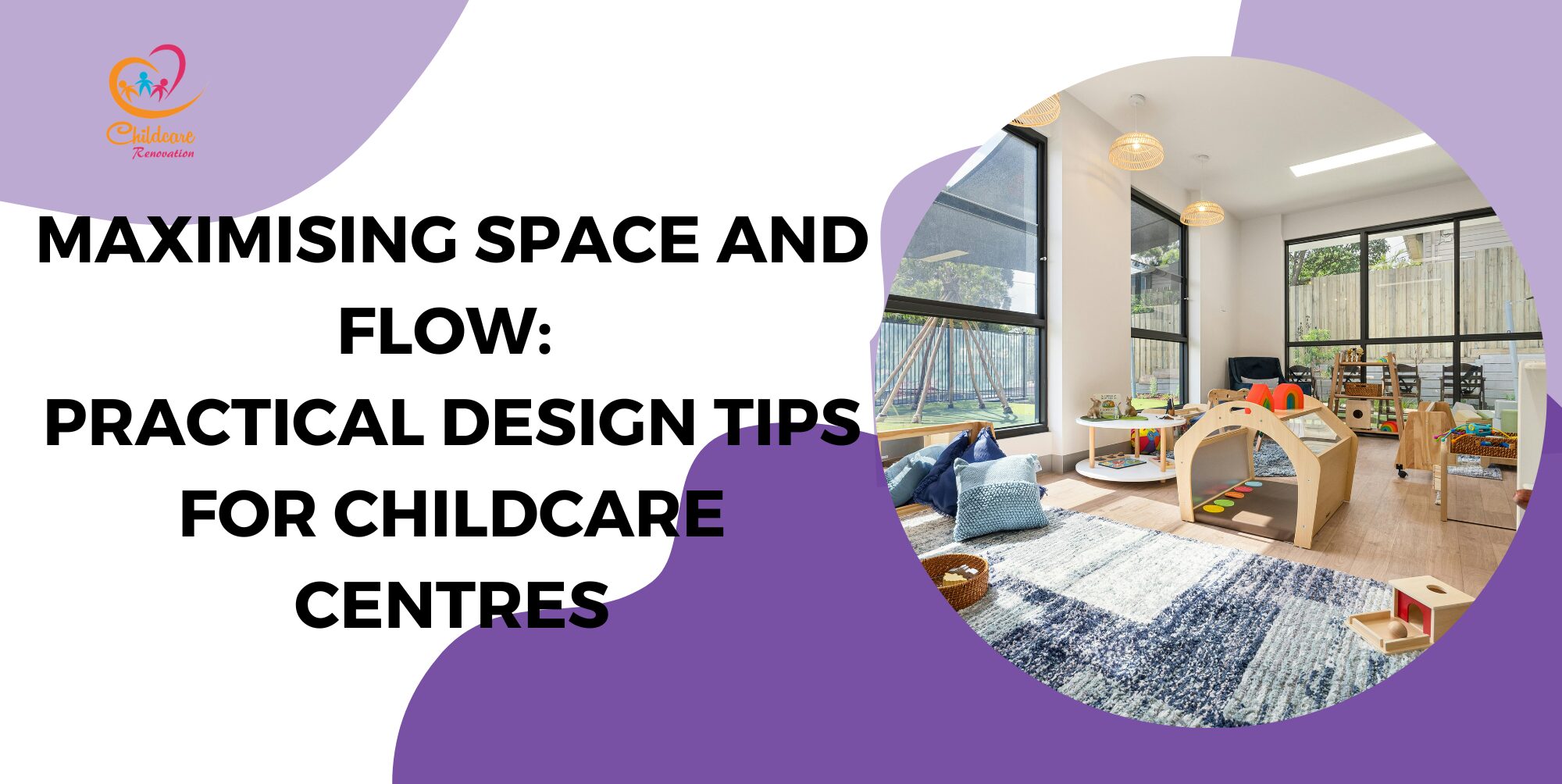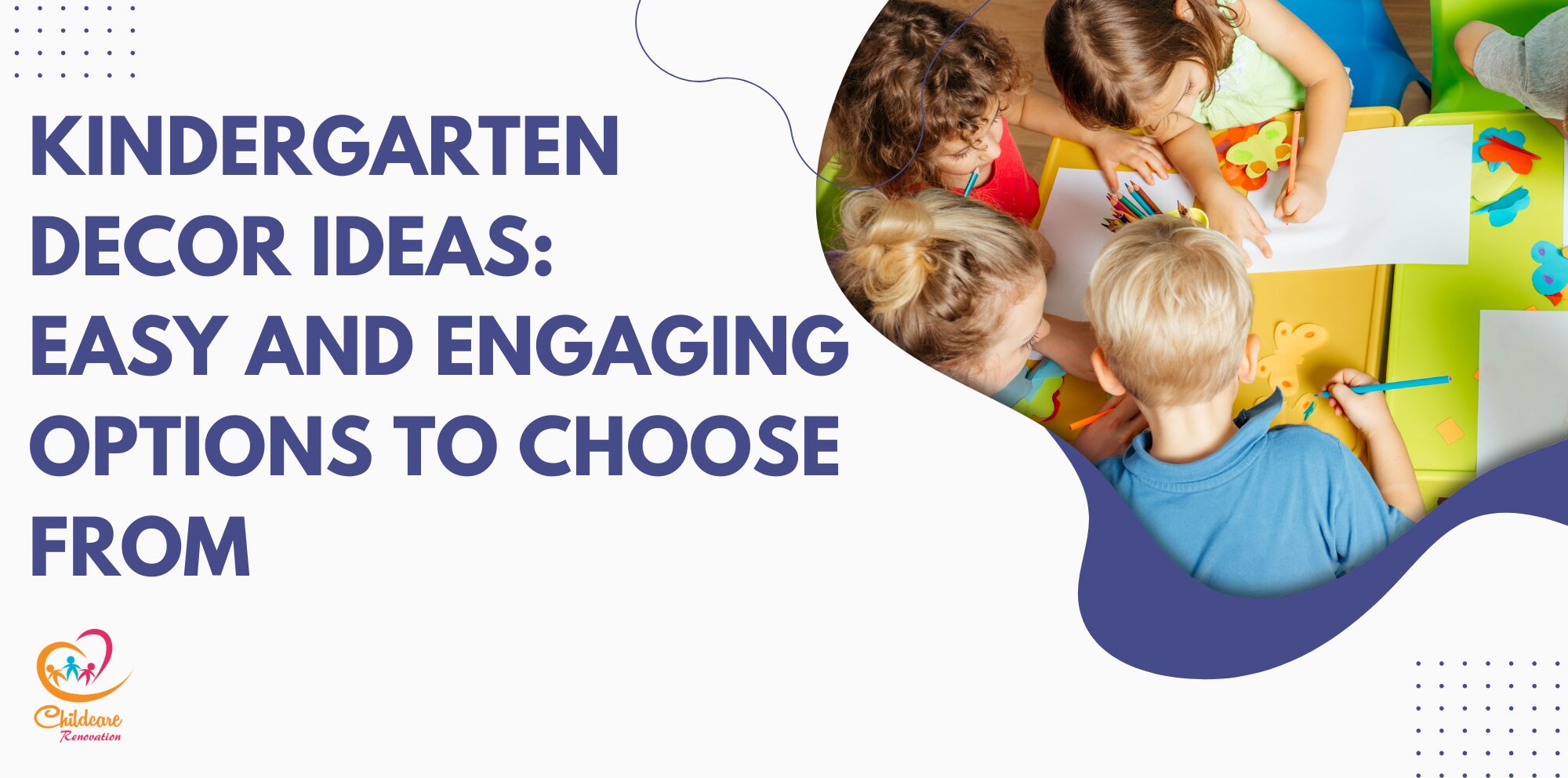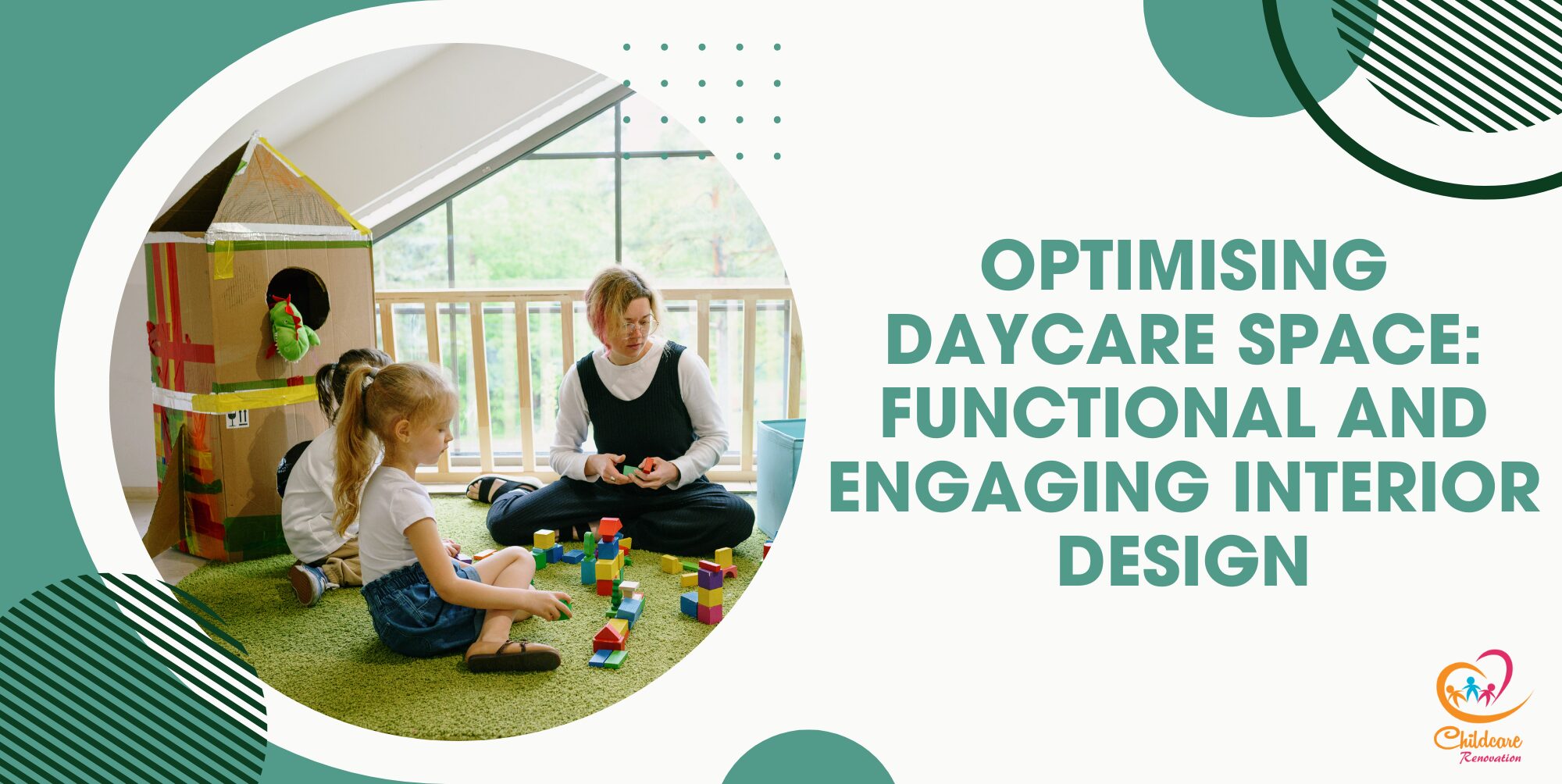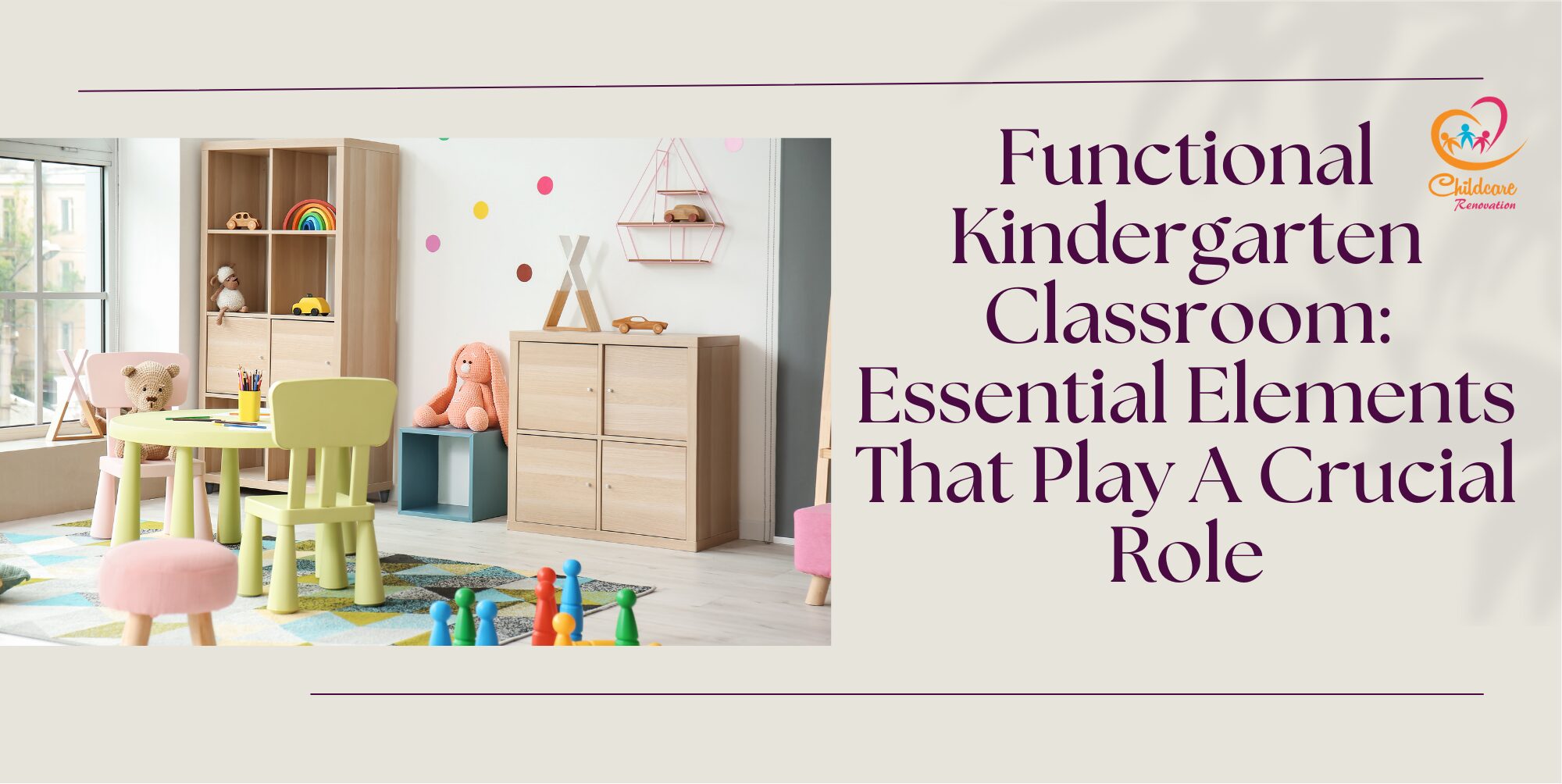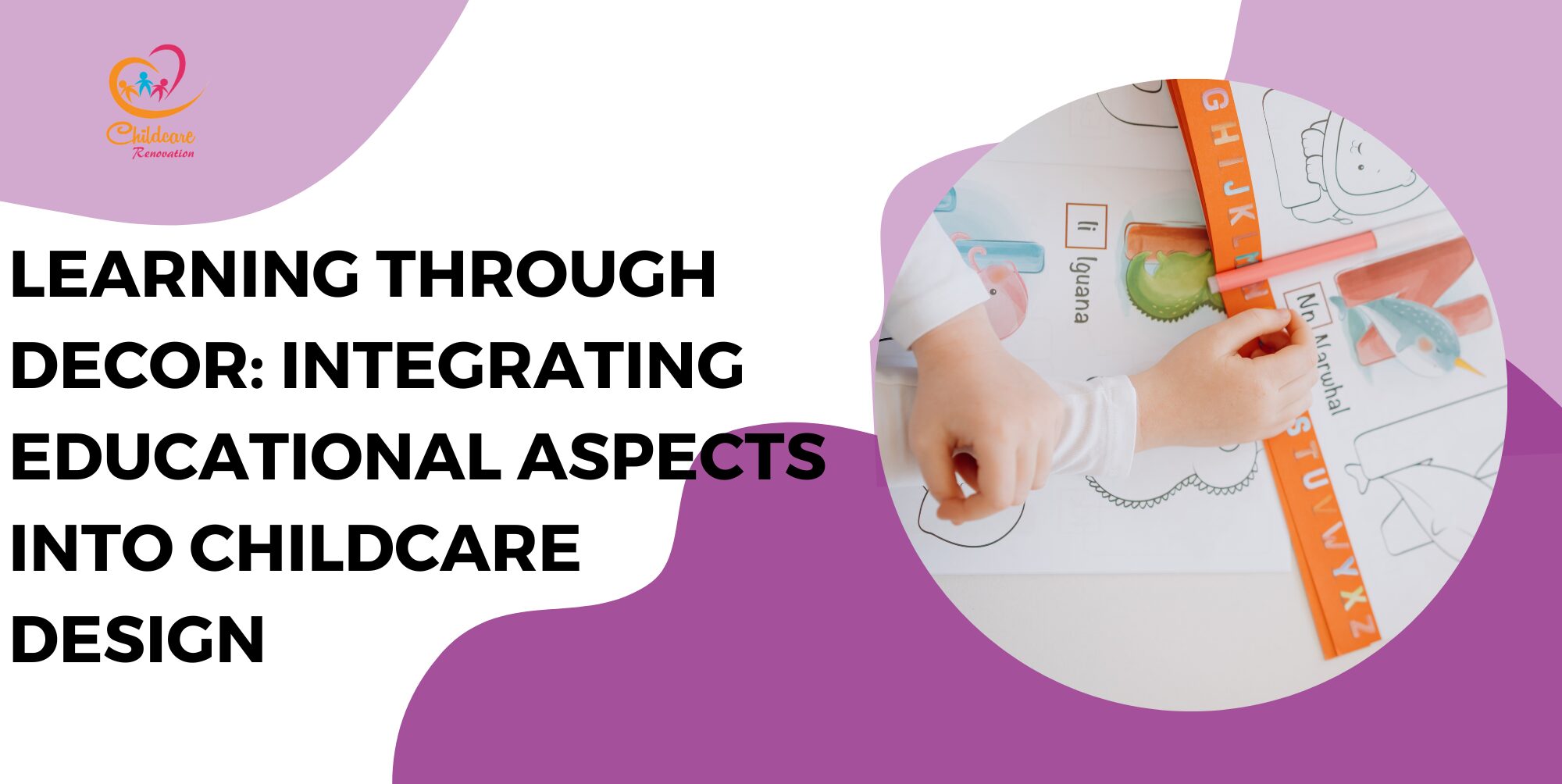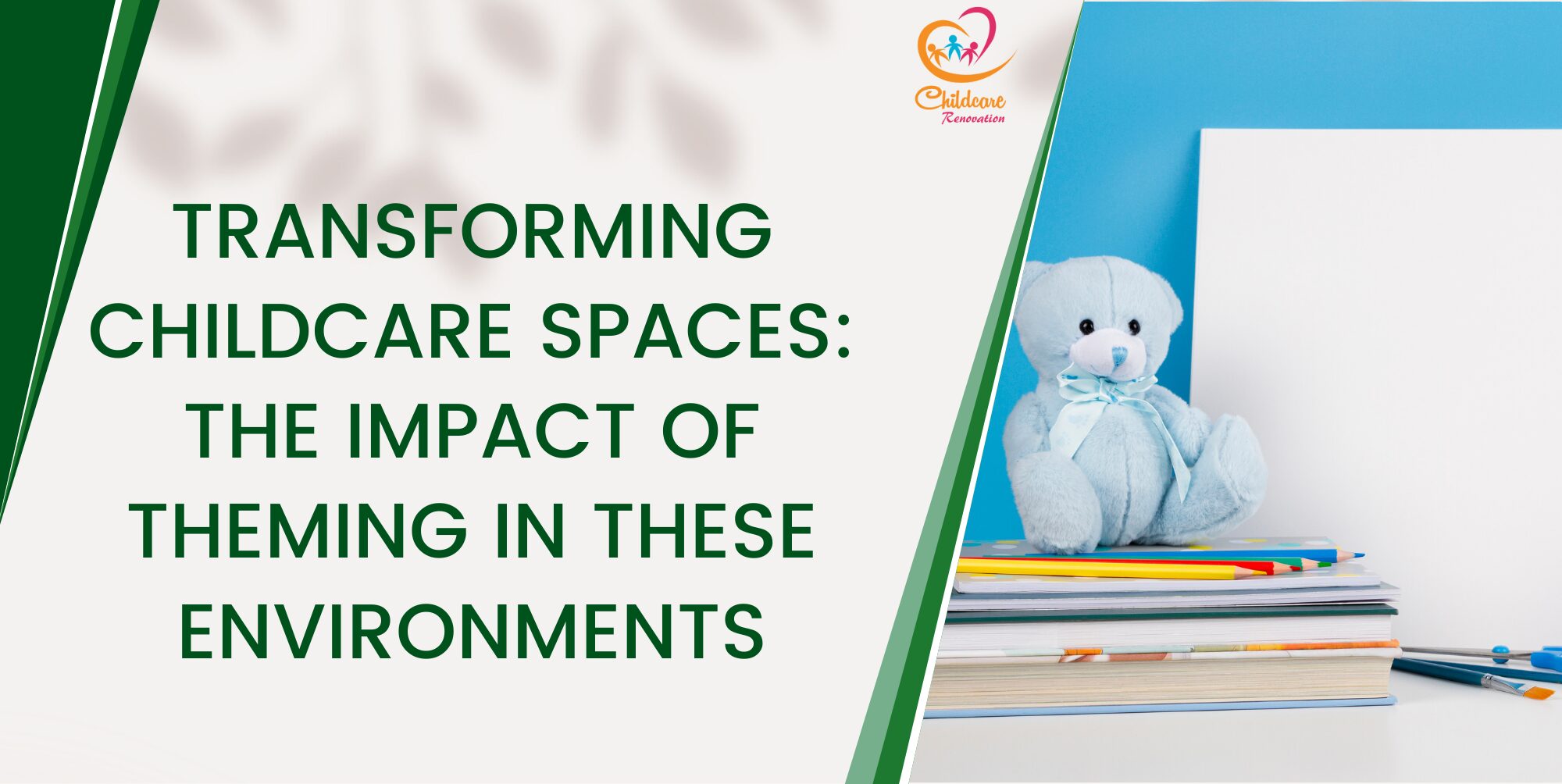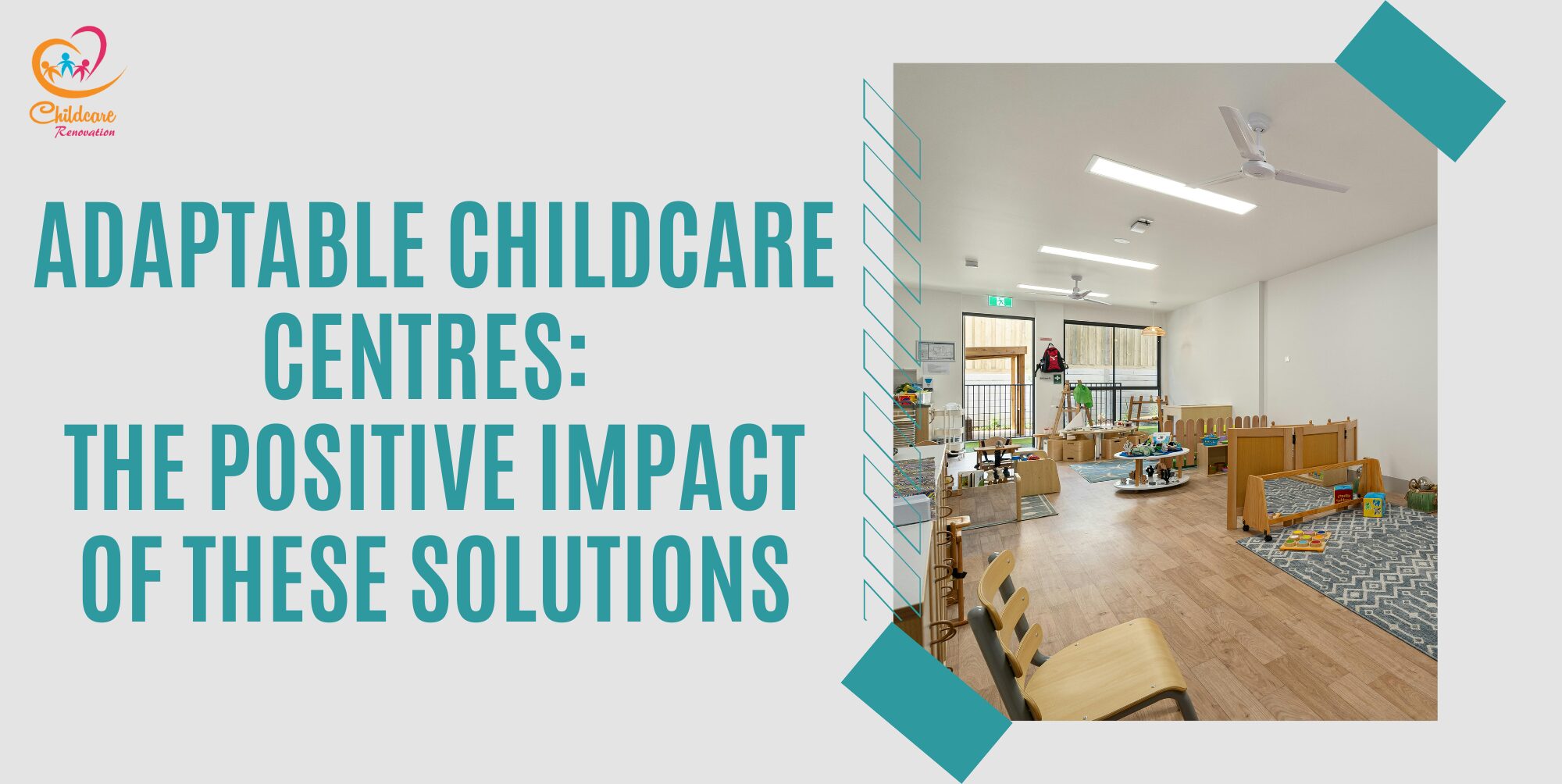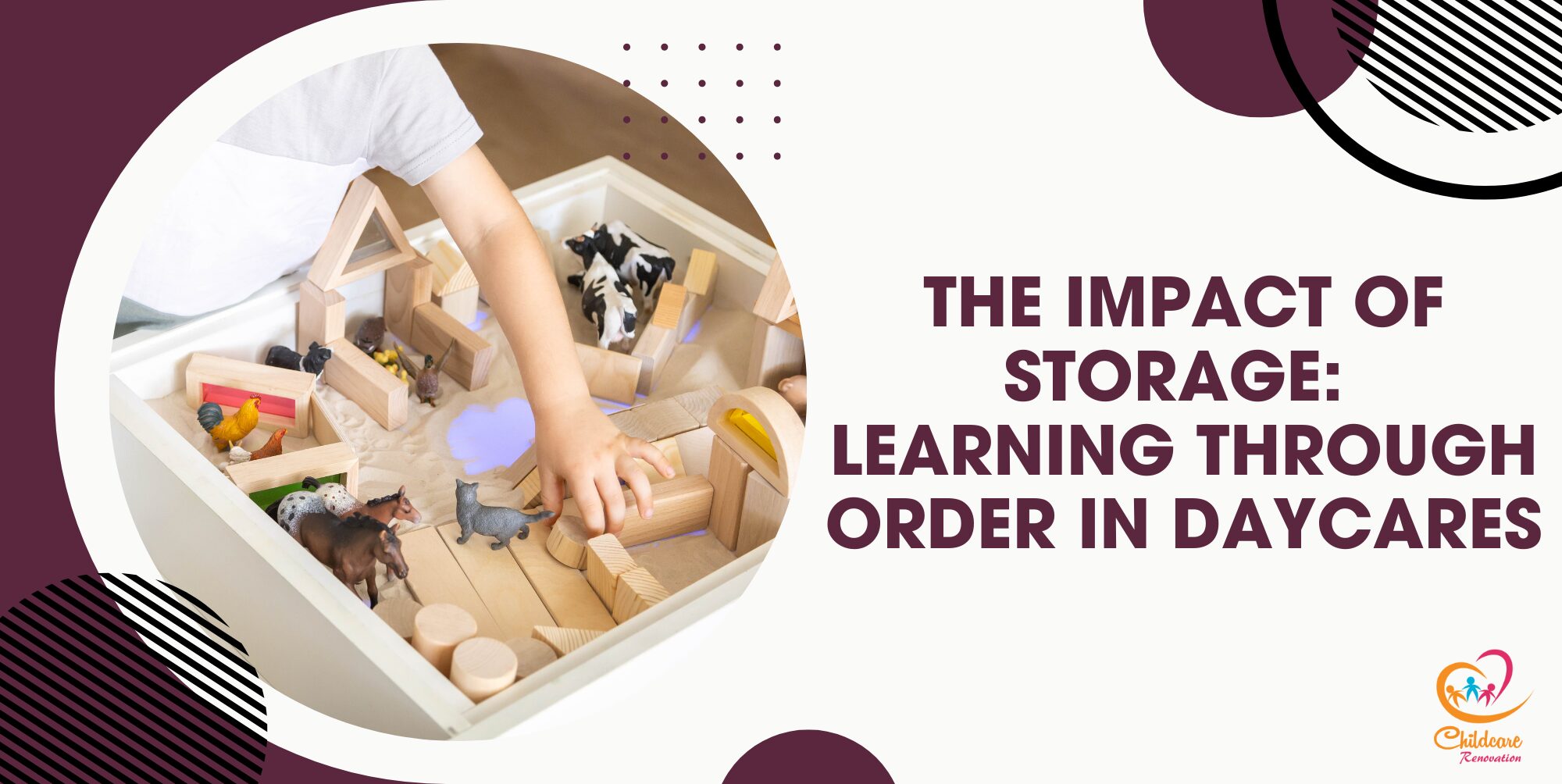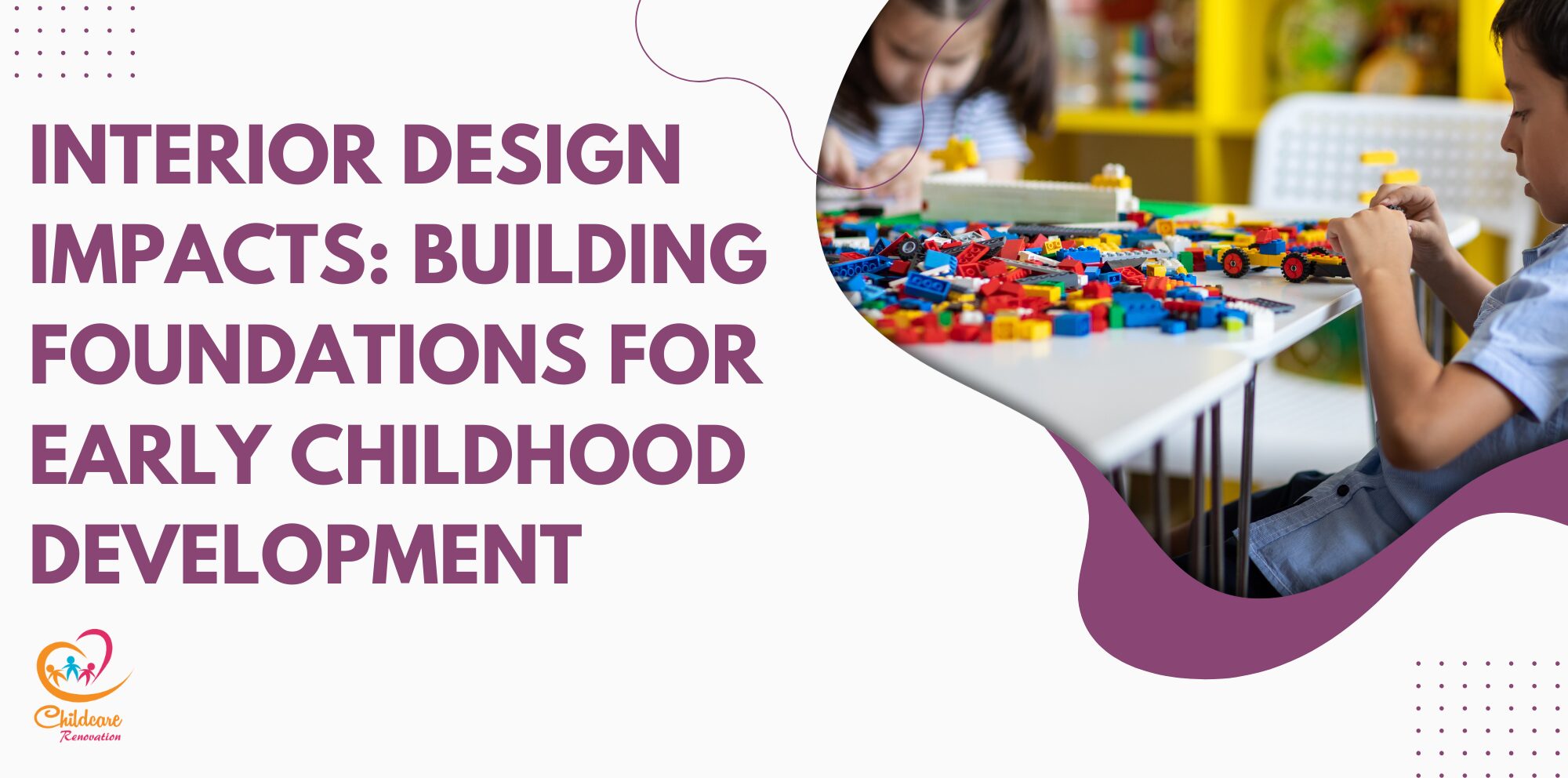Essential decor elements in childcare centres are important to set the mood and tone within the establishment. These decor elements are key aspects to the learning environment within the centre itself. Below are some must have aspects in childcare centres.
Essential Decor Elements 1: Defined Learning Zones
Since they aid in the creation of organised environments for particular tasks, therefore fostering both attention and involvement, defined learning zones are an important design feature in daycare centres. Kids readily know where to go for various kinds of play and learning through the use of furniture, rugs, and wall colour to visually define zones.
For instance, a reading nook with pillows and low lighting encourages quiet, solo book browsing; an imaginative area with open floor space and art supplies beckons creative expression. Stocked with interactive materials like water or sand tables, a sensory play space beckons discovery and fine motor skill development.
Additionally encouraging the cognitive development of little children are these zones. Children are more likely to immerse themselves deeply and meaningfully in an activity when they are provided a setting designed for it. Moreover, specified areas support behavioural management since youngsters know the expectations of each one. While a solo play area may inspire independent play, a group activity area helps to stimulate cooperation.
Apart from usefulness, defined areas improve the classroom’s general appearance by providing visual appeal and making the environment feel ordered and inviting. It helps children develop self-regulation and gives them the confidence needed to negotiate their surroundings. Carefully creating learning areas, childcare centres provide an environment that is both instructional and stimulating, therefore promoting a feeling of security and concentration for young pupils.
Essential Decor Elements 2: Flexible And Open Layouts
Flexible and open layouts are important design features that greatly influence how childcare centres educate their children. Children may free move and participate in many activities without the restriction of rigid walls or fixed spaces in an open and flexible design.
Using movable partitions, multi-use furniture, and open shelving helps one create a dynamic environment where various zones may easily be changed to fit changing needs. For example, a room that could change from a peaceful reading area to a group project space helps to support both social and individual learning. Flexible arrangements promote active exploration, letting kids pick their activities and go between spaces according to their interests and developmental requirements.
@whinkeemy Weather-themed decorations for Early Impression Child Care Centre, Cyberjaya Graduation Day 🎈Thank you for choosing us! ✨ #balloondecoration #decoration #ballooncyberjaya #balloonart #whinkeemy
Since kids can meet in open spaces to explore ideas or share experiences, this kind of design also fosters communication and cooperation. Simultaneously, it encourages individuality by letting kids look for a tranquil corner should they require some personal space. An open design also improves supervision since it lets teachers quickly check every part of the classroom. It also lessens the sensation of overcrowding, so creating a more relaxing and inviting environment that fosters play and focus.
Flexible arrangements in a childcare centre maximise space use, promote creativity, and support autonomy. Educators can foster an interesting atmosphere that accommodates all forms of learning, from individual reflection to group cooperation, by creating environments flexible and roomy.
Essential Decor Elements 3: Safe And Soothing Sensory Corners
Key design components that greatly help to define the childcare centres’ learning environment are safe and calming sensory corners. These corners give kids a relaxing place to control their sensory input and emotions.
These rooms, abound with soft fabrics, soothing lighting, and tactile materials like textured cushions, sensory bins, or water beads, serve children’s sensory requirements and might assist them manage overstimulation. Sensory corners aid emotional development by offering a retreat where kids may go to relax or take a sensory break, hence promoting self-regulation and emotional intelligence.
Children with sensory processing disorders or those who could get overpowered in bigger, more active environments particularly benefit from these places. They offer a calm and peaceful setting where youngsters can relax and reorient prior to returning to more demanding tasks. These areas’ design components soft lighting, cozy seating, or weighted blankets help to create a calming environment that fosters concentration and rest. Furthermore encouraging sensory exploration and aiding kids build fine motor abilities and tactile awareness, sensory corners can be set with interactive gadgets including sensory boards, soft textures, or gentle sound components.
Childcare centres help meet both the emotional and developmental requirements of children by including safe and relaxing sensory corners into the general classroom design, hence making the space flexible to different learning styles and emotional states.
Essential Decor Elements 4: Labels And Visual Cues
Creating learning environments in childcare centres depends on much from labels and visual signals. Early literacy development, independence, and a more systematic environment that improves a child’s navigation of the classroom are all aided by these tools.
Picture labels on shelves, bins, and doors enable young children to see where items, resources, and learning tools fit, therefore strengthening their knowledge of responsibility and organisation. By linking images to words, youngsters start to relate spoken language with visual symbols, therefore supporting language acquisition and identification. Visual schedules also provide another key cue.
@kiddochildclinic A green and forest-themed wall mural was chosen for our clinic to create a calming and welcoming environment for both children and their parents. You must come to experience it! Call or whatsapp us for an appointment 🤗🤗 at 0198330935.#childclinic #childspecialistclinic #klinikpakarkanakkanak #kiddoclinic #kiddochildclinic #pakarkanakkanak #clinicshahalam #klinikshahalam #paediatrician
Representing daily routines through images or symbols helps youngsters to expect activity changes, hence lessening anxiety and fostering a feeling of security. Young children, who flourish in organised surroundings, benefit especially from this consistency. Further helping to direct children’s behaviour and promote attention during various activities, colour-coded zones and visual cues such as “quiet zone” or “group time” These cues, which help children learn to make independent decisions based the visual information supplied, therefore increase autonomy.
Generally speaking, labels and visual cues help to create organisation and clarity in a childcare environment, hence boosting children’s confidence and empowerment in their learning. These basic but powerful decorative features help to create a neat, interesting, and developmentally appropriate environment that finally improves the young children’s learning experience.
Essential Decor Elements 5: Wall Decor With Purpose
The learning atmosphere in childcare centres is much shaped by wall decoration. Beyond their visual appeal, deliberate wall decor can improve learning experiences, encourage involvement, and support important developmental abilities.
Alphabet charts, number lines, vibrant world maps, and other educational visuals serve as continual learning tools youngsters encounter throughout the day. These images offer reference points that playfully and memorably strengthen ideas like letter recognition, counting, and geography. Wall art displaying kids’ own creations also fosters pride and belonging, which raises self-esteem and stimulates ingenuity.
Interactive components including magnetic boards or Velcro strips transform walls into hands-on learning stations that inspire kids to interact with their environment in a tactile and meaningful way. These interactive surfaces assist groups activities early literacy requirements, pattern recognition, and even teamwork. Moreover, by encouraging pattern recognition and emotional intelligence, thoughtfully placed visual cues such daily routines, rules, or feelings charts support children with cognitive development.
In an inclusive environment, diverse art and culturally pertinent images might help kids learn about many cultures and communities, therefore encouraging empathy and understanding and fostering a feeling of belonging. Wall decor with purpose changes the surroundings of a daycare centre into an energetic, interesting place that supports young children to grow and flourish while also creates a welcoming, encouraging environment by reinforcing learning.
Speak with The Experts
Planning to get started at your kindergarten but have no idea about it?
Childcare Center Renovation Singapore is a reliable company for renovation and interior design. They have about ten years of experience in this field and have a good reputation among customers.
Call us now to get your desired kindergarten design ideas now!

